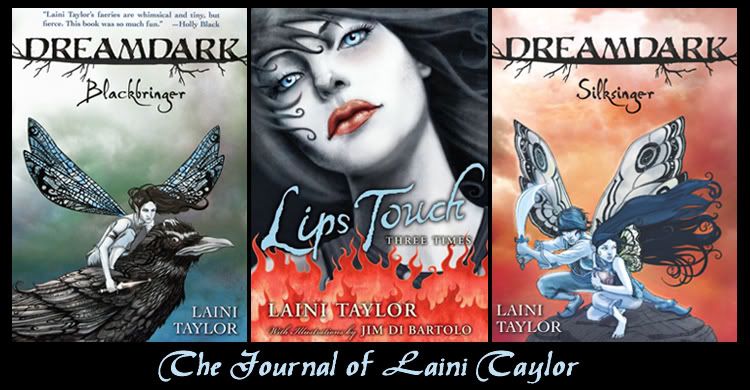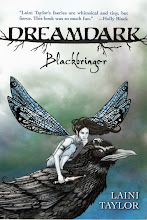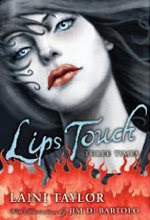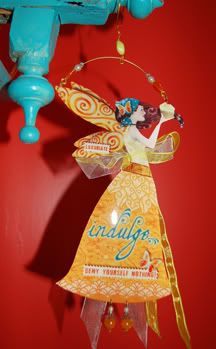In the aftermath of the wonderful Western Washington SCBWI conference, I thought I'd share here my notes for the Plotting workshop I gave the other day. Plot is something that people ask me about a lot, and I find it is a hard thing to talk about in the abstract. I mean, you can talk in either the most basic, generic terms, or you can be really specific and talk about plots of particular books, etc. But I wanted to find something in between, a way of discussing plot that would be useful to people working on their own novels -- that's always what I strive for in my workshops. I want people to leave with a new way of looking at their w.i.p. and be itching to get back to work.
The below thoughts on Plot are the beginning of something I am sure I will spend much more time contemplating, refining, over the years. I love to think/write/talk about the writing process, and here is my first crack at tackling PLOT. Whew!
* * * * * * * * * * * * * * * * * * * * * * * * * * * * * * * * * * * * * * * * * * * * *
What is plot? Is it really this most basic thing? Yes: it is! Plot is the answer to the question, What happens?
There’s another elementary question we ask about stories and that is, What is it about? And that’s not exactly plot. That question tends to premise and theme. If someone asks me what Blackbringer is about, I might answer: it’s about a faerie who hunts devils. That’s the premise. Or I might say: It’s about personal responsibility and claiming our own power. That’s one of the themes. But plot is: the sequence of events over which the premise and themes play out.
Plot is: your characters living their way through their story.
Our job as plotters is to come up with a sequence of events that allows our characters to live with range and vitality, through ups and downs, suspensefully, and culminating in some kind of satisfying growth or victory or accomplishment, while along the way providing ourselves opportunities to flesh out our themes and make the book as rich as possible.
Author Sarah Waters said, “Novels are for readers, and writing them means the crafty, patient, selfless construction of effects. I think of my novels as being something like fairground rides: my job is to strap the reader into their car at the start of chapter one, then trundle and whizz them through scenes and surprises, on a carefully planned route, and at a finely engineered pace.”
Sarah Waters’s fairground ride, her carefully planned route and finely engineered pace, is plot.
Scenes are the cellular unit of plot. While plotting we:
1. Craft individual scenes that give us opportunities to show our characters being and doing and interacting.
2. Craft the overall story arc and progression of scenes, how they fit together to tell the story, and how they amp up toward the climax.
* * *
[sidebar on scene-craft]
Narration vs. Dramatization
Much of storytelling is a balance between narration (telling the reader something), and dramatization (showing the reader something). One of many choices we make again and again as writers is when to show and when to tell. You know the old saw, "Show, don't tell." ? Yeah, well, sometimes it is better to tell. There's a place for both. There's a lot of "telling" in Lips Touch (less in my Dreamdark books, but it's still there). Each of the three story introductions is narration.
... This is the story of the curse and the kiss, the demon and the girl. It's a love story with dancing and death in it, and singing and souls and shadows reeled out on kite strings. It begins underneath India, on the cusp of the last century when the British were still riding elephants with maharajas and skirmishing on the arid frontiers of the empire. The story begins in Hell.
I'm totally telling the reader what's what here, from a detached perspective. But that's not always the desired approach. Sometimes you need to be closer to the action, closer to the character. For example, at the end of my story Hatchling there is a scene in which Esme gets a kiss. In the original version, this moment existed only as one fragment of a narrative montage, reading, "... Esme got a first kiss of her own ..." That was all! In a line note, Arthur Levine, my editor, wrote: "I think you need to dramatize this moment." And he was right! Though it takes place during the denouement (aftermath of the climax) and is not critical to the main action of the story, it is an important moment. And, it is a potential fun moment for readers. Why jip them? Why not show them the kiss. And so I expanded it into what it is now (p. 261-264). Thanks, Arthur! (Love your editor, writers. Really.)
Another way of looking at narration vs. dramatization is: are you outside the scene peering in, an observer? Or are you inside the scene, living it right alongside the characters, or as the characters? Both are valid ways of writing a scene, but both create a very different feeling in the reader, and are used to different effect. I would argue that any important scene needs to be dramatized, to make the reader feel it. (But it's possible I could persuaded to concede to examples. There are just so many ways to write!)
[end sidebar]
* * *
So we have a definition of plot: the stuff that happens. So, how do you craft a good plot?
You’ve heard it said that there are only seven plots in all of literature, or twenty, or three, or whatever. The exact number is a quibble, but there are few, for the reason that our wants and needs as consumers of story are simple and rather primal, just as our basic needs as human beings are simple and primal: humans need food, shelter, and love (clothing optional depending on climate).
Readers need (this is my own list; you might argue):
--connection
--enjoyment
--satisfaction
... and as it turns out, there are some basic storylines that satisfy these needs in a deep and pure way, which is why most stories are a variant one of a few basic plots. It is, of course, what you do with them that counts. Chekhov said, "There is nothing new in art but talent." It is not necessary to be conscious of these basic plots or your appropriation of them while writing. Much of this will be unconscious -- you could say that plots are part of our collective unconscious -- but you want to understand readers' needs and how to meet them, if you want your stories and books to be loved.
My own goal for my novels is to create books that readers will want to climb inside of and live in, characters that readers will want to be.
Next time: Character, Motivation, and Conflict. Come back soon!
[Plot -- Part II: Character, Motivation, and Conflict]
[Plot -- Part III: Structure]
Subscribe to:
Post Comments (Atom)









12 comments:
Laini! Thank you!!
I was trying to make sense of the notes I took at your presentation, and I think I was trying to write without looking at the paper... man!
Thank youi so much for this.
Núria
PS: Do not ever apologize for talking about Clementine. She's the bee's knees!
Hi Laini,
Thanks so much for this.It's really great. I love to hear you say (or rather, read you write!(-:)that narrative also has its place. I've heard "show, don't tell" so often that I'm sometimes afraid that in using narrative I'll slow my W.I.P. down. Sometimes narration seems like the only way to get certain parts of the story told but lately I've been a bit anxious about using it.
So...thank you! I'm looking forward to the next installment!
Louise (-:
This is great; I love your writing articles! One question: why did you post it here instead of at notforrobots? Is that blog no longer being updated? Just wondering, thanks!
Thank you for sharing! I've been really stuck in my work in progress. Hopefully this will help with jumpstarting my writing again!
This is so, so, so helpful. Thank you very much, Laini! Plot tends to be my nemesis, and this is inspiring.
Good stuff!
I'm at the library, trying to shake off worry for Magnus, who has had yet another visit to the hospital with that darned eye infection. Kind of hard.
But this is what I need right now. Thanks!
Thanks, Laini!
I agree with Louise, it is so liberating to read that we dont have to slavishly stick to "show" for story, which I find quite paralysing - sometimes it is just raining & no doubt about it being just rain. I also want to thank you for putting things so simply, its makes learning the craft so much more enjoyable. Love the name of your wee one, another refreshing change.
Have I told you lately that I love you? WISH I could have heard you teach, but thank you for this.
;)
Some excellent explanations here of fictional concepts such as plot, theme, and scene.
I agree with you that there are times when it's better to tell than to show... and I agree with your editor that an important first kiss may not be one of them :)
I am intrigued by your idea about the three needs of a reader: connection, enjoyment, and satisfaction. I think that all three of these, particularly connection, often depend less on the plot structure than on the character development. I see that you're planning a future blog post about character -- looking forward to it.
Great readding your post
I find this explanation about how plots work very helpful.
Post a Comment